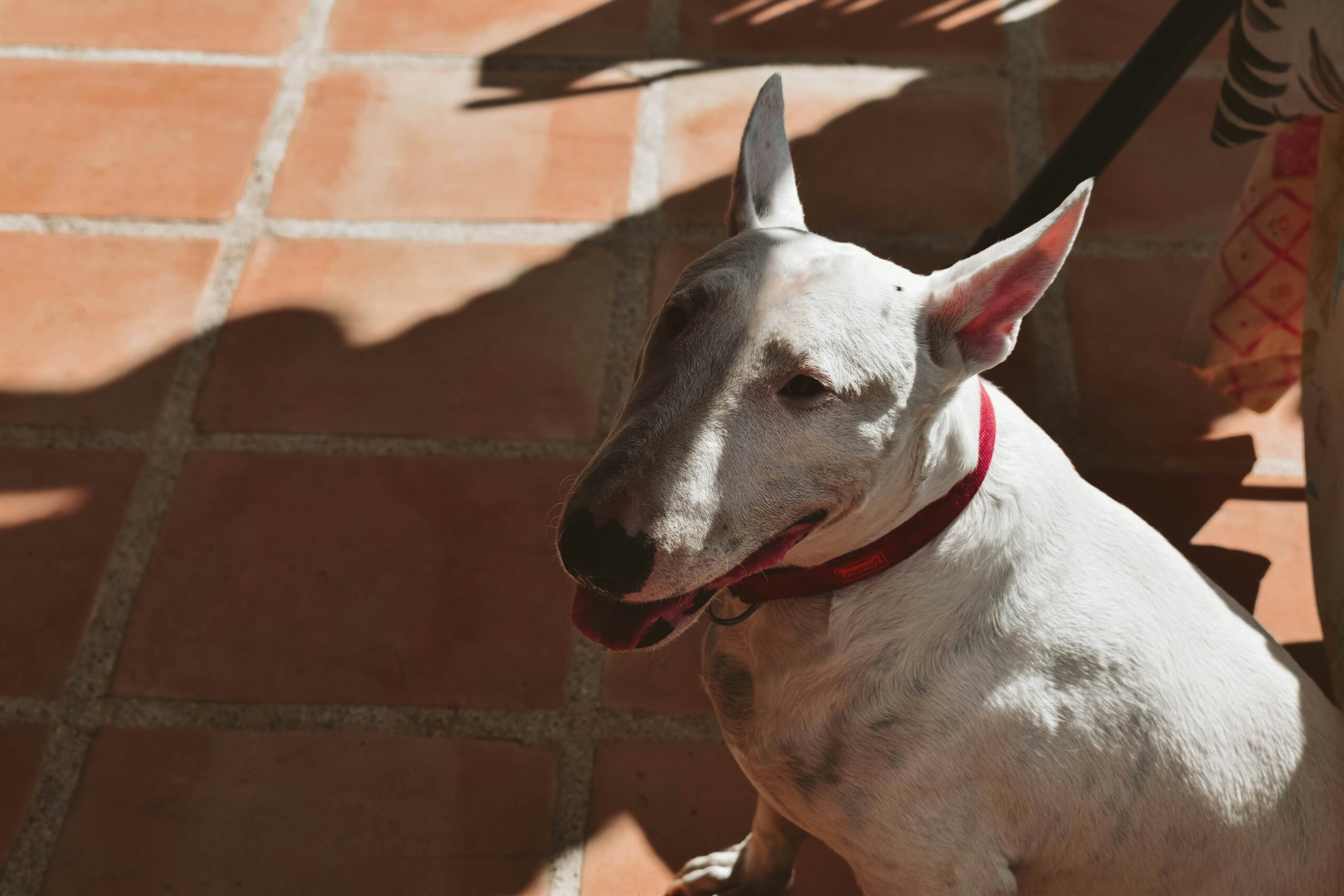If you’re seeking an energetic and loving companion, look no further than the Bull Terrier. Known for their playful nature and affectionate demeanor, these dogs captivate hearts everywhere. Understanding the unique history and characteristics of the Bull Terrier is essential for any potential owner. From their physical traits to their personality traits, you’ll discover why they shine in any household. Moreover, learning about training, health, and maintenance ensures a fulfilling life for your beloved pet. Embrace the playful spirit of the Bull Terrier and unlock the many joys they bring into your life!
History and Origin of the Bull Terrier
The Bull Terrier has a rich history that traces back to the early 19th century in England. Originally bred for bull-baiting, they were a delightful mix of the bulldog and various terrier breeds, designed for strength and agility. This combination resulted in a dog capable of both endurance in fights and companionship at home.
- Key Milestones:
- 1835: Bull-baiting was banned, shifting focus to household companions.
- 1862: The first Bull Terrier was officially recognized by the Kennel Club, leading to the breed’s standardization.
- 1930s: The Bull Terrier made its mark in popular culture, showcasing its charm and playful nature.
Today, the Bull Terrier is known for its unique egg-shaped head and muscular body. While they maintain their athletic build, they have evolved into affectionate family pets. Understanding their origin helps reveal why they possess such a vigorous spirit paired with unwavering loyalty. Thus, owning a Bull Terrier not only connects you with an ancient lineage but also introduces you to a lively and loving companion.
Physical Characteristics of the Bull Terrier
The Bull Terrier stands out with its unique and robust appearance. Understanding these physical traits can help potential owners appreciate this breed’s charm. Here are some key characteristics:
- Head: The Bull Terrier features a distinctive oval-shaped head, providing it with a strong and confident expression.
- Body: Its muscular body is compact yet agile, designed for physical activity and play.
- Coat: The Bull Terrier has a short, dense coat that requires minimal grooming but does need regular brushing to keep it healthy.
- Colors: They come in various colors, including white, brindle, and black, allowing individual personalities to shine through.
- Eyes: The Bull Terrier boasts small, triangular eyes that convey an endearing and mischievous look.
| Feature | Description |
|---|---|
| Head Shape | Oval-shaped head |
| Build | Muscular and compact |
| Coat | Short, dense, and easy to maintain |
| Color Variety | White, brindle, black, and more |
| Eye Shape | Small and triangular |
With a keen understanding of the Bull Terrier‘s physical characteristics, you can appreciate not only their beauty but also their incredible capabilities as a loving companion.
Temperament and Personality Traits
The Bull Terrier is renowned for its unique personality that blends playfulness with loyalty. Here’s what makes them stand out:
- Affectionate Nature: Bull Terriers thrive on companionship and love to be part of the family. Their affectionate demeanor makes them great for homes with children.
- Playful Attitude: These dogs possess a natural exuberance. Their playful antics can lighten any mood and provide endless entertainment.
- Protective Instincts: A Bull Terrier will guard its loved ones fiercely. While they are generally friendly, their protective nature makes them keen watchdogs.
- Curiosity: Bull Terriers are curious by nature, always eager to explore and engage with their surroundings. This inquisitiveness ensures they keep you on your toes!
- Stubbornness: On the flip side, Bull Terriers can exhibit a stubborn streak. Early training and consistent boundaries are essential for a well-mannered companion.
Embrace these traits to cultivate a fulfilling relationship with your Bull Terrier, ensuring a happy, harmonious home.
Training and Socialization Tips
Training a Bull Terrier effectively requires consistency, patience, and positive reinforcement. Here’s how to structure your training approach:
- Start Early: Begin training as soon as your Bull Terrier joins your home. Early socialization is crucial for developing a well-adjusted dog.
- Use Positive Reinforcement: Reward your Bull Terrier with treats, praise, or play when they display good behavior. This encourages them to repeat those behaviors.
- Keep It Fun:Bull Terriers thrive in playful environments. Incorporate games and light-hearted activities into your training sessions to maintain their interest.
- Short Sessions: Limit training sessions to 5-10 minutes. This avoids overwhelming your Bull Terrier and keeps their focus sharp.
- Socialize Extensively: Expose your Bull Terrier to different environments, people, and other animals. This builds confidence and reduces anxiety in new situations.
| Training Aspect | Tips |
|---|---|
| Duration | 5-10 minutes per session |
| Techniques | Positive reinforcement & games |
| Socialization Methods | Meet different people & other pets |
By following these tips, your Bull Terrier will grow into a well-behaved and sociable member of your family. Consistency is key – so keep at it, and enjoy the journey together!
Health Concerns and Lifespan
When considering bringing a Bull Terrier into your home, it’s crucial to be aware of their health concerns and potential lifespan. Generally, these dogs enjoy a life expectancy of 10 to 14 years. However, several health issues may impact their longevity, including:
- Skin Conditions: Bull Terriers are prone to allergies, which can lead to skin irritations. Regular vet check-ups and quality nutrition can mitigate these issues.
- Heart Problems: They are susceptible to certain heart conditions, particularly ventricular septal defects. Keep an eye on your dog’s energy levels and consult a vet for any concerns.
- Kidney Disorders: These dogs may face chronic kidney disease as they age, so routine blood work is essential.
To ensure a thriving, healthy Bull Terrier, consider the following:
| Aspect | Recommendations |
|---|---|
| Diet | High-quality dog food with balanced nutrition |
| Exercise | Regular activity to prevent obesity |
| Routine Vet Visits | Annual checks to catch health issues early |
By staying informed and proactive about their health, you’ll help your Bull Terrier live a happy, vibrant life.
Grooming and Maintenance Needs
Caring for a Bull Terrier involves more than just love and attention; proper grooming ensures their health and happiness. Here’s a clear breakdown of what you need to consider:
- Coat Care:
- Brushing: Brush your Bull Terrier weekly to remove loose hair and reduce shedding.
- Bathing: Bathe them every few months or as necessary, using a gentle shampoo to maintain coat health.
- Nail Trimming:
- Regularly check and trim your Bull Terrier’s nails to prevent overgrowth, which can affect their walking.
- Ear Cleaning:
- Inspect their ears weekly for dirt or wax build-up. Clean with a soft, damp cloth if needed.
- Dental Hygiene:
- Brush their teeth several times a week to prevent dental issues. Consider dental chews as a fun alternative.
By establishing a consistent grooming routine, you’ll keep your Bull Terrier looking spiffy while promoting good health. Remember, regular maintenance not only benefits their appearance but also strengthens your bond with this playful and affectionate companion!
Creating an Ideal Living Environment for Bull Terriers
To provide a happy and healthy life for your Bull Terrier, it’s crucial to create an ideal living environment. These playful and energetic companions thrive in spaces that cater to their needs:
- Space: Ensure you have enough room for your Bull Terrier to move around freely. A spacious home with a secure yard allows them to romp and play without worries.
- Safety: Bull Terriers are curious and strong. Therefore, dog-proof your space by removing hazards and securing areas they shouldn’t access. Use gates to restrict access to stairs or other unsafe areas.
- Comfort: Provide a cozy bed in a quiet area where your Bull Terrier can retreat and relax. A comfortable resting spot promotes good sleep and well-being.
- Stimulation: Bull Terriers need mental engagement. Incorporate toys, puzzles, and interactive games into their environment to combat boredom and foster healthy play.
- Social Spaces: Bull Terriers are social animals. Create areas where they can interact with family members or other pets. It’s essential for their emotional health.
In summary, a safe, stimulating, and accommodating environment is key to keeping your Bull Terrier happy and thriving!
Activities and Exercises for Bull Terriers
To keep your Bull Terrier happy and healthy, engaging them in regular activities and exercises is crucial. These playful companions thrive on physical and mental stimulation. Here are some effective ways to ensure your Bull Terrier expends energy and remains entertained:
- Daily Walks: Aim for at least 30-60 minutes of brisk walking each day. This promotes cardiovascular health and relieves boredom.
- Play Fetch: Harness their instinct to chase with a good game of fetch. This activity strengthens your bond and keeps them agile.
- Obstacle Courses: Set up a mini obstacle course in your backyard. It challenges them mentally and physically, enhancing their problem-solving skills.
- Agility Training: Enroll your Bull Terrier in agility classes. It fosters teamwork and provides them with social interaction.
- Mental Stimulation Games: Invest in puzzle toys or treat-dispensing products. This encourages them to think critically.
By incorporating these activities, you not only enjoy quality time with your Bull Terrier but also contribute to their overall well-being. Adapt these suggestions to your dog’s preferences, and watch them thrive!
Frequently Asked Questions
What makes Bull Terriers such playful companions?
Bull Terriers are known for their high energy and playful nature, making them one of the most delightful companions for active families. Their lively disposition encourages playtime, which can include games like fetch or agility training. This breed thrives on social interaction and physical stimulation, which not only keeps them healthy but also strengthens the bond between the dog and its family. It’s essential to engage them regularly to prevent boredom and maintain their joyful character.
How affectionate are Bull Terriers with their families?
Bull Terriers are exceptionally affectionate, often forming very close attachments to their human families. Their loyalty is unmatched, and they often seek out affection and companionship, making them ideal pets for people who enjoy a dog that actively wants to be part of the family. They are known for their goofy antics and cuddly nature, readily showing love through snuggles and play. Their affectionate behavior delights dedicated pet owners who invest time in nurturing this bond.
Are Bull Terriers good with children?
Yes, Bull Terriers are typically very good with children, displaying a protective yet playful demeanor. Their robust nature allows them to play energetically without easily getting hurt, which is ideal for active households. However, as with any dog breed, early socialization and training are crucial to ensure that they learn how to interact gently and appropriately. Their affectionate attitude towards children can make them wonderful family pets when well-trained.
What type of training do Bull Terriers require?
Training for Bull Terriers should start early and focus on positive reinforcement techniques. They are intelligent dogs but can also exhibit a stubborn streak, making consistent training essential. Incorporating fun and engaging activities into their training can keep them motivated. Socialization is also key; expose them to different environments, people, and other animals to ensure balanced behavior. This approach helps them grow into well-mannered companions who understand household rules.



